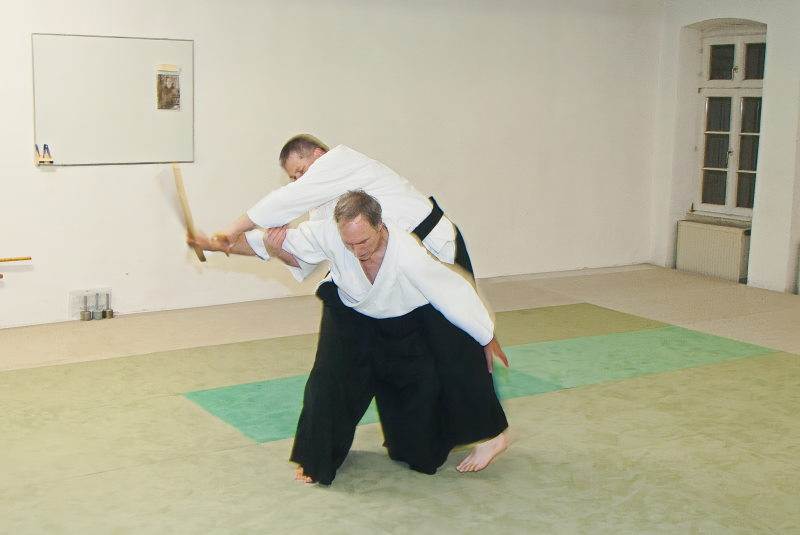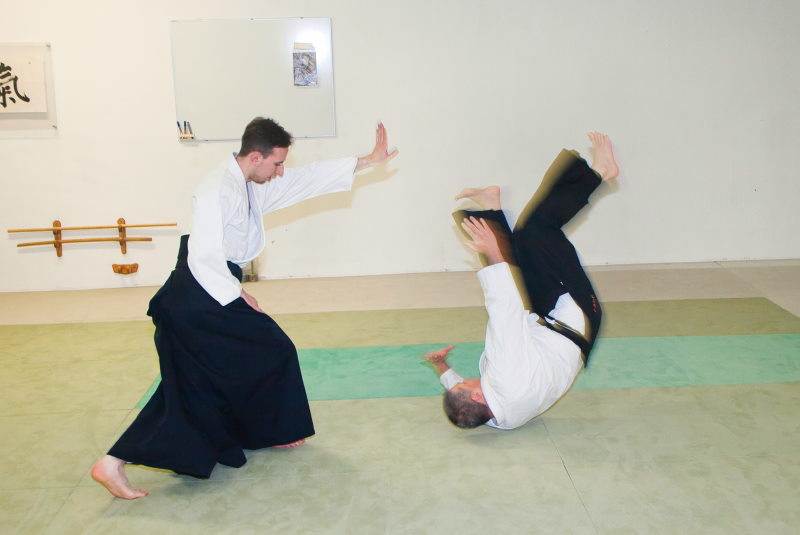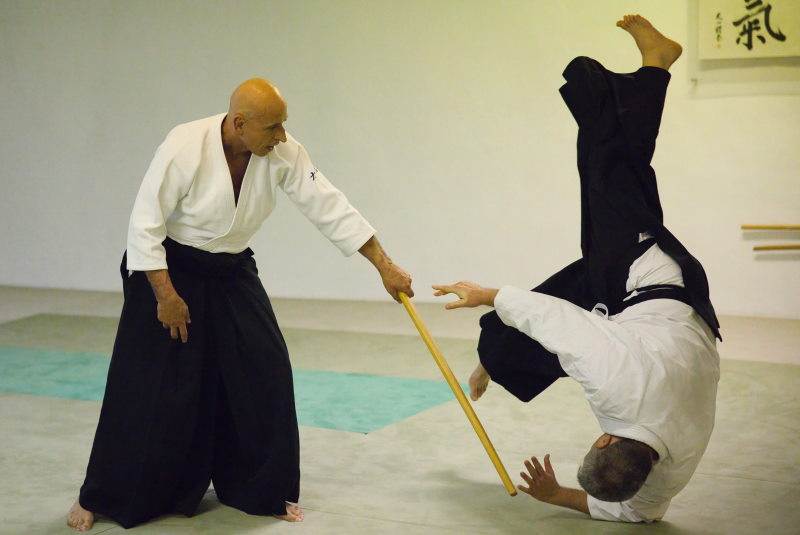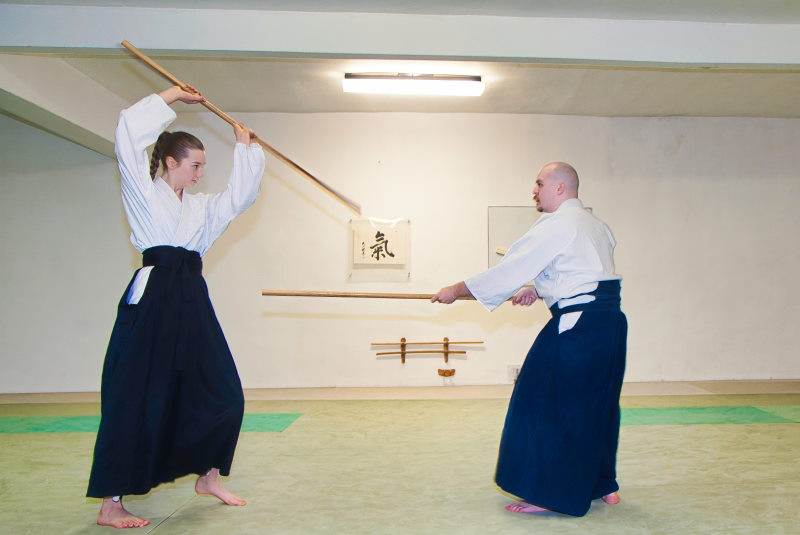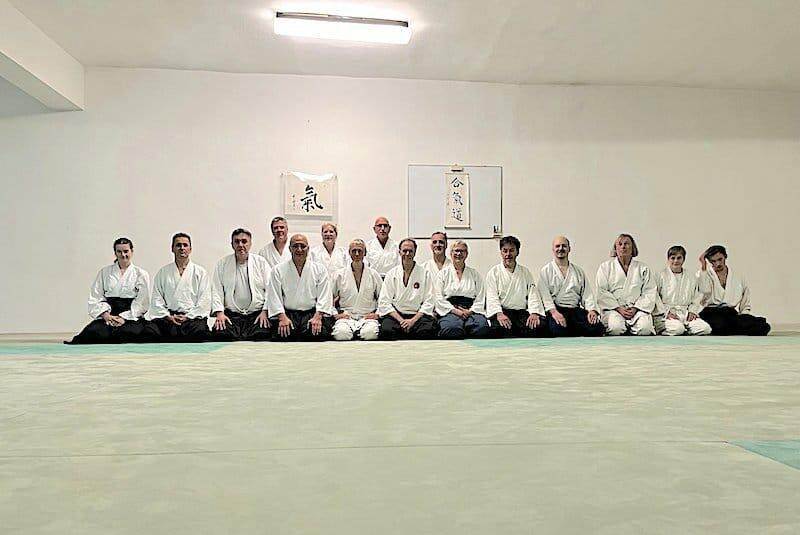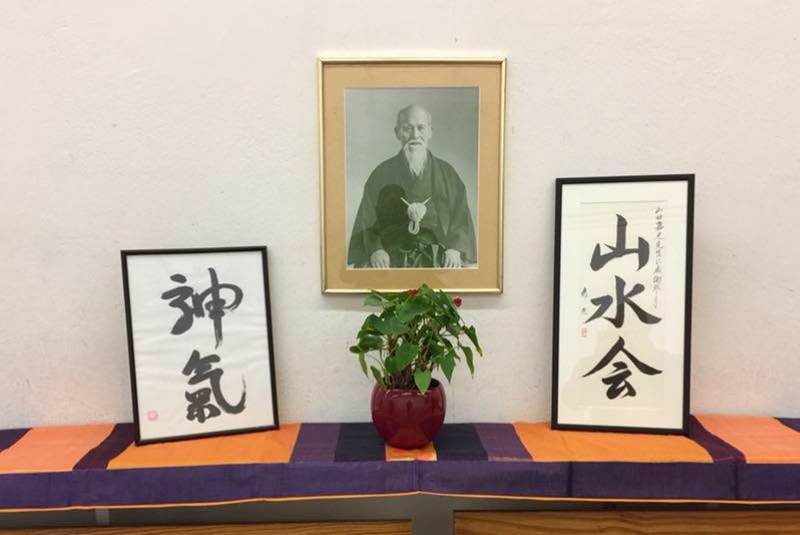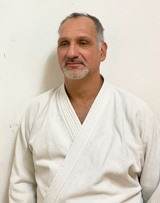Aikido – “Der Weg der Harmonie und Kraft”
“Jeder besitzt einen Geist, der geschärft werden kann, einen Körper, der in irgendeiner Weise trainiert werden kann, einen Pfad, dem er folgt.”
Morihei Ueshiba (1883-1969)
Miteinander kämpfen statt gegeneinander
Aikido ist eine der weniger bekannten Disziplinen, die unter dem Oberbegriff des Kampfsports zusammengefasst werden. Obwohl die Ursprünge im Schwertkampf und der Selbstverteidigung liegen, ist Aikido ein defensiver oder friedfertiger Sport . Der Aikidoka versucht nicht, seinem Angreifer zu schaden sondern den Angriff zu neutralisieren und die Situation zu kontrollieren.
Nur folgerichtig ist: es gibt in dieser Disziplin keine Turniere oder Trophäen zu gewinnen und auch keine Siege zu erringen. Was auf den ersten Blick leicht wirkt, wird in jahrelanger Übung erarbeitet und perfektioniert. Was Aikido nicht ist: ein schneller Selbstverteidigungskurs – ein akrobatisches Kung-Fu-Training – oder reine Meditation.
Selbsterfahrung und Gemeinschaft erleben
Im Aikido sind alle immer zugleich Lehrer und Schüler. Zwar gibt es zur Einführung regelmäßige Angebote für Anfänger, aber prinzipiell trainieren alle Mitglieder des Dojos zusammen. Aikido lebt von den engen Dojo-Gemeinschaften, dem kooperativen Trainingsmodell und dem ethischen Anspruch, Obwohl die Ursprünge im Schwertkampf und der Selbstverteidigung liegen, ist Aikido ein defensiver oder friedfertiger Sport . Der Aikidoka versucht nicht, seinem Angreifer zu schaden sondern den Angriff zu neutralisieren und die Situation zu kontrollieren: „Weg der Harmonie und Kraft“.
Wie passt das zu einem Kampfsport? Das Prinzip beim Aikido lautet, sich mit der vom Angreifer eingebrachten Energie zu verbinden, diese umzuleiten und „Uke“, den angreifenden Partner, durch Ausweichen und Aus-der-Balance-bringen effektiv zu stören. Dabei ist das Ziel, einem Angriff nicht mit Gewalt zu begegnen, sondern ihn für beide Parteien möglichst schonend abzulenken.
Für wen ist Aikido die richtige Disziplin? Eigentlich für fast jede und jeden. In unserem Dojo trainieren Mitglieder Mitglieder im Alter von 12 bis über 60, manche seit 3 Monaten, andere seit 40 Jahren. Auch als Erwachsener kann man immer neu oder wieder einsteigen. Das Lerntempo bestimmt der Praktizierende individuell; Wettbewerb, Sieger und Verlierer gibt es nicht. Der schönste Erfolg ist sowieso das gute Gefühl auf dem Nach-Hause-Weg – irgendwo zwischen Müdigkeit und Vorfreude auf die nächste Trainingseinheit.
!!! Diese Zeile nicht ändern oder löschen – wird für das Untermenü benötigt !!!

